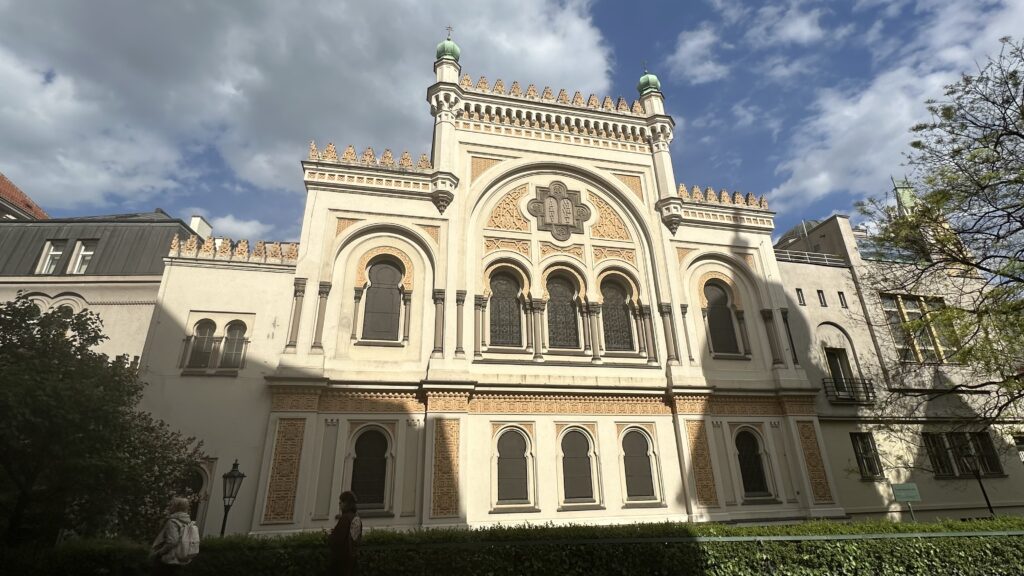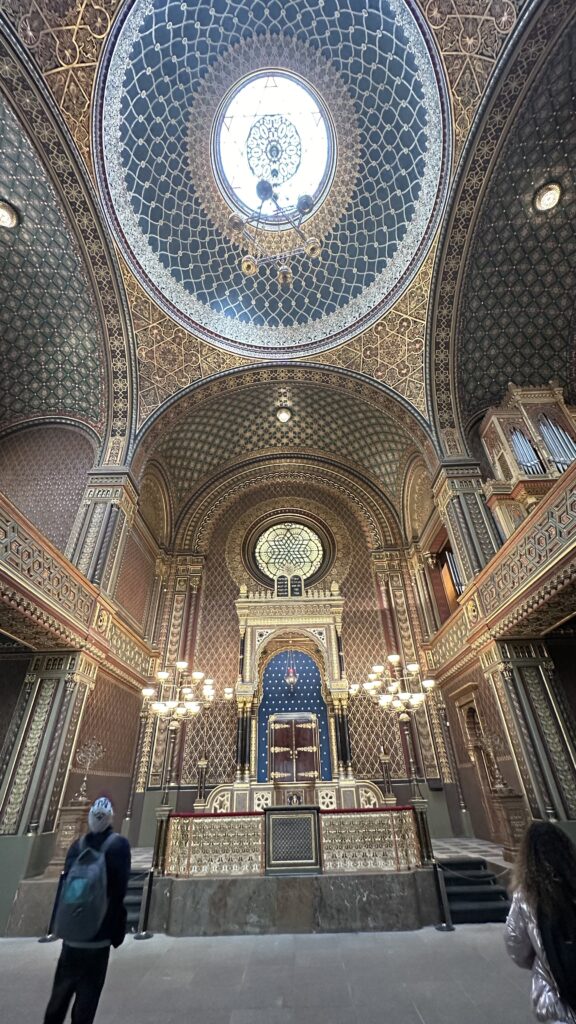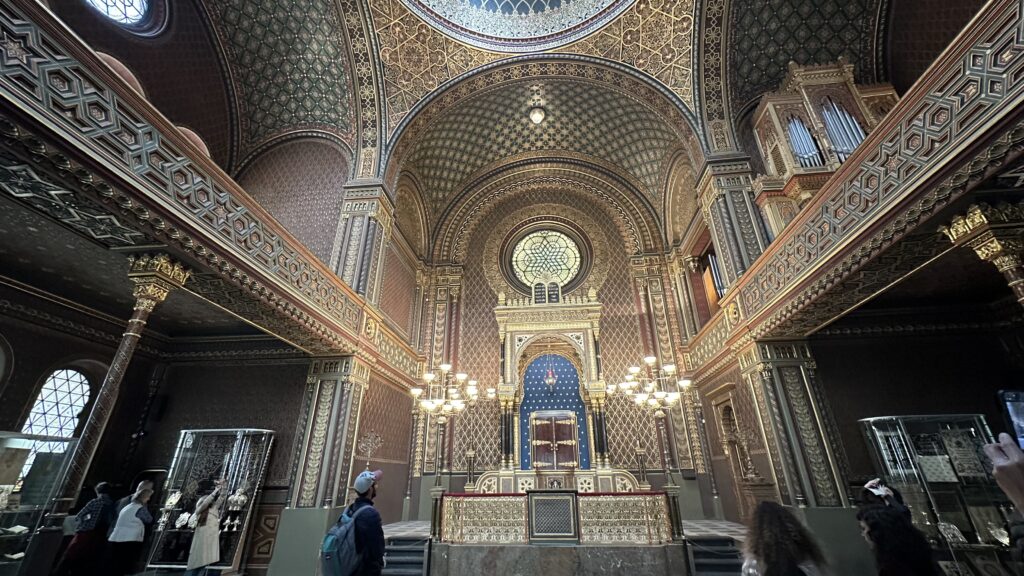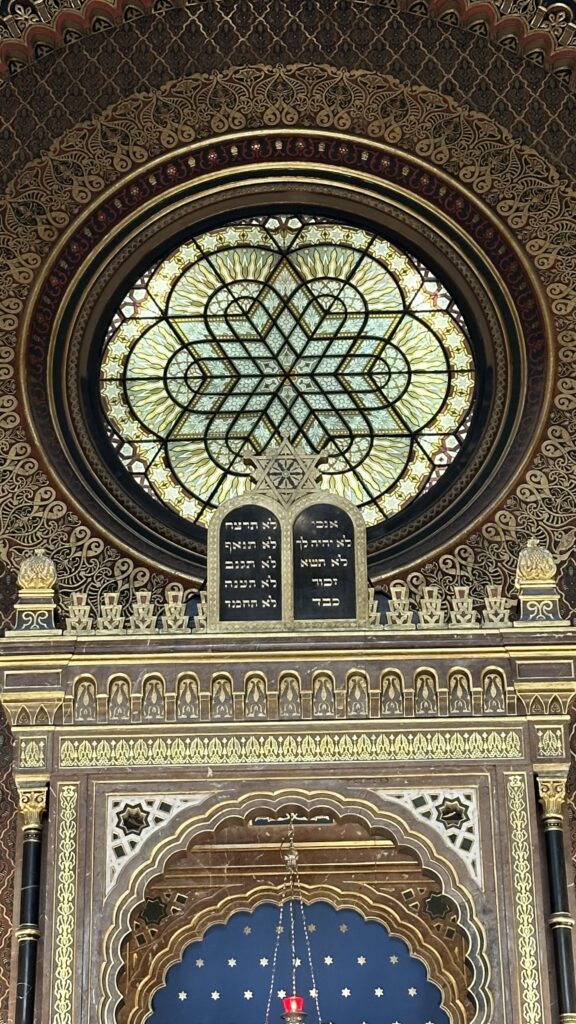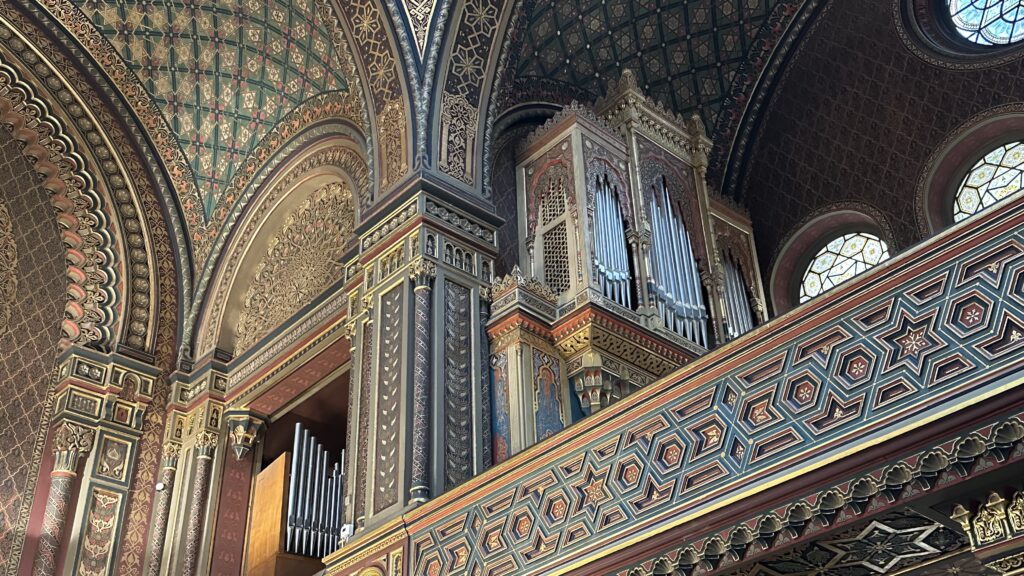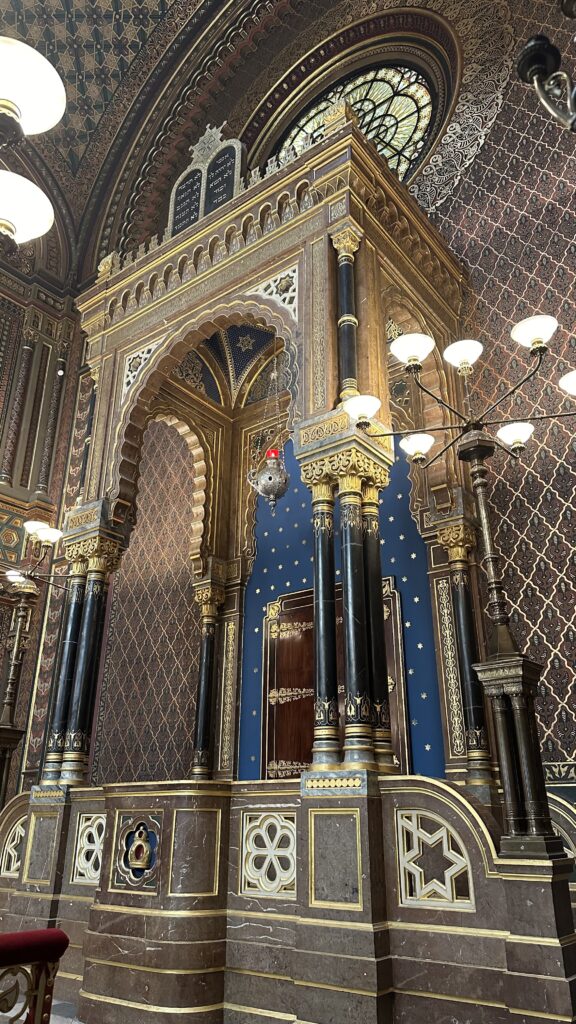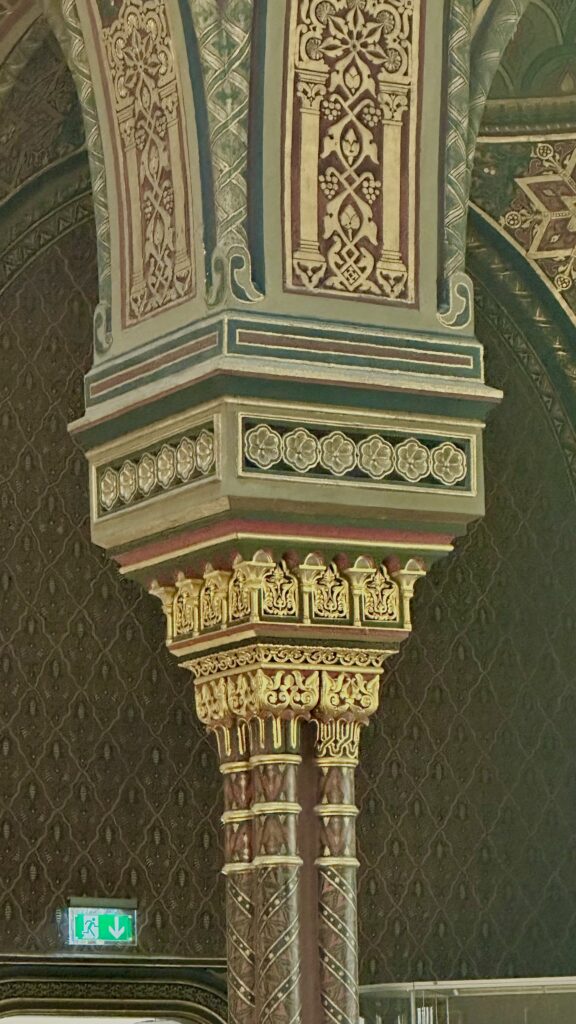Prague is divided into four quarters—The Castle Quarter (where we’re staying) and the Lesser Quarter on the West Bank of the Vltava River, and Old Town and New Town on the east side of the river. The Jewish Quarter is part of Old Town, and that’s where this afternoon’s adventure took us. The history of the Jewish people in Bohemia/Czechoslovakia is not substantially different from other European cities—isolation, persecution on the one hand, and significant cultural and social contributions on the other.
Entry into the “formal”Jewish Quarter (tickets required) gives you access to some restricted sites—several synagogues of varying antiquity, the Old Jewish Cemetery (until 1786, the only place Jews were allowed to be buried), and a Ceremonial Hall. The Pinkas Synagogue, a small Romanesque building and the second oldest surviving synagogue in Prague, has been converted to a memorial to Jews who perished in the Holocaust. There are artifacts and stories, but it’s the multiple hallways covered with more than 77,000 names of Jews from Prague (mostly) and Czechoslovakia who lost their lives that is most striking about the space. Ironically, the structure survived World War II because the Nazis wanted to turn it into a museum of “the extinct Jewish race.” Pretty chilling.
We ventured into a couple of other small synagogues which are mostly used now for documenting Jewish social and cultural history in Prague. The Ceremonial Hall is a beautiful little building with striking mosaic floors and more cultural history exhibits. The gem came at the end of the day with the Spanish Synagogue. Spanish? Kind of. In 1867, Jews were finally granted full social rights. To celebrate, the community decided to build a new synagogue. It was decided that this synagogue should reflect Moorish styles from what was considered to be their Golden Age as a European culture. The arches and overall structure inside and out is definitely Moorish, like the extraordinary examples from Cordoba and Granada, but on a smaller scale. Jewish themes—notably the Star of David—are represented through in many stylized ways.The colors of the interior are definitely not Morrish, however. It looks to me like they took a Moorish building and finished it in Baroque and Art Nouveau styles—being especially faithful to the latter by covering every square inch of available surface area with a decoration of some sort. The result, whatever you want to call it, is gorgeous, as you’ll see below.
Pinkas Synagogue
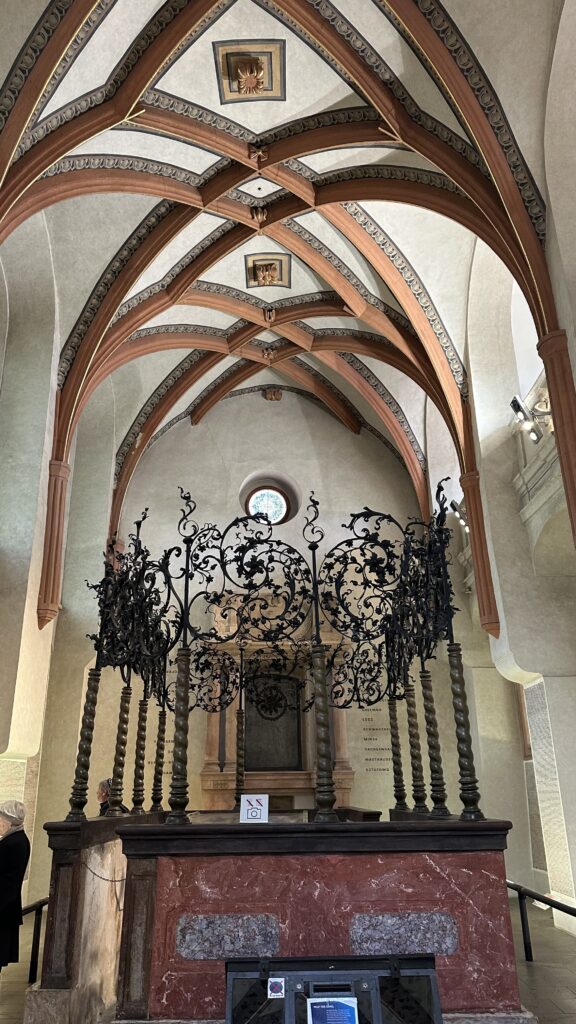
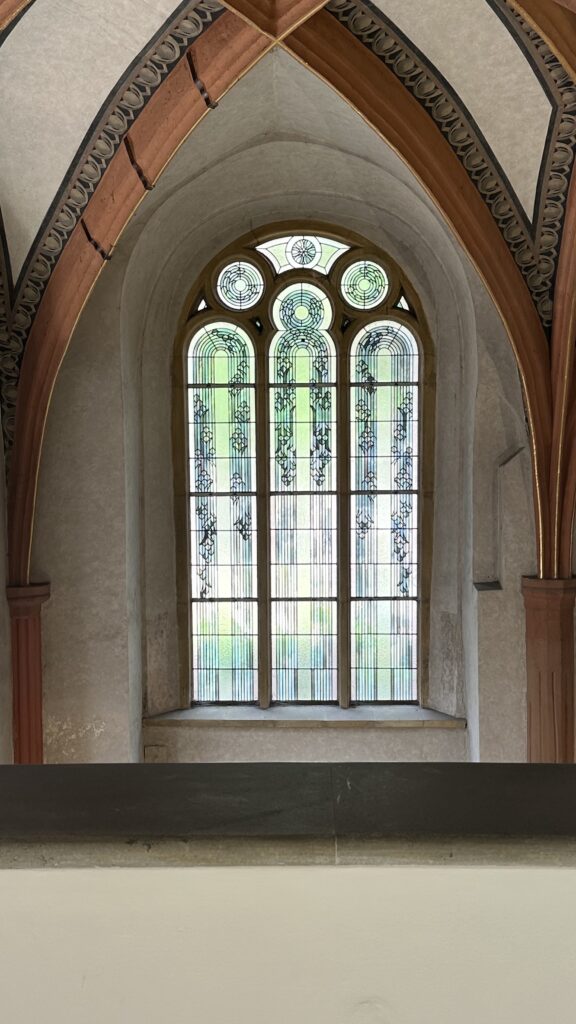
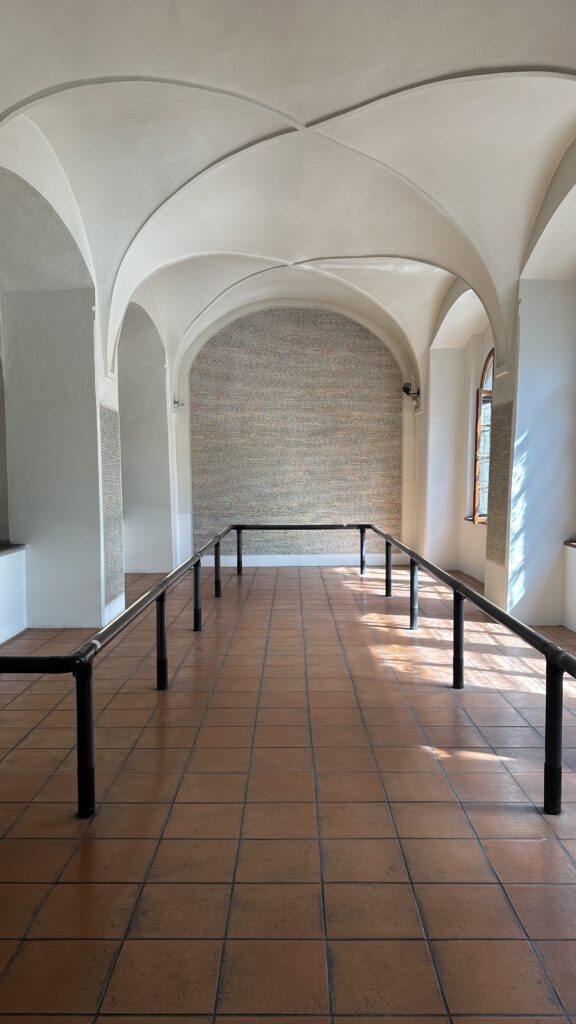
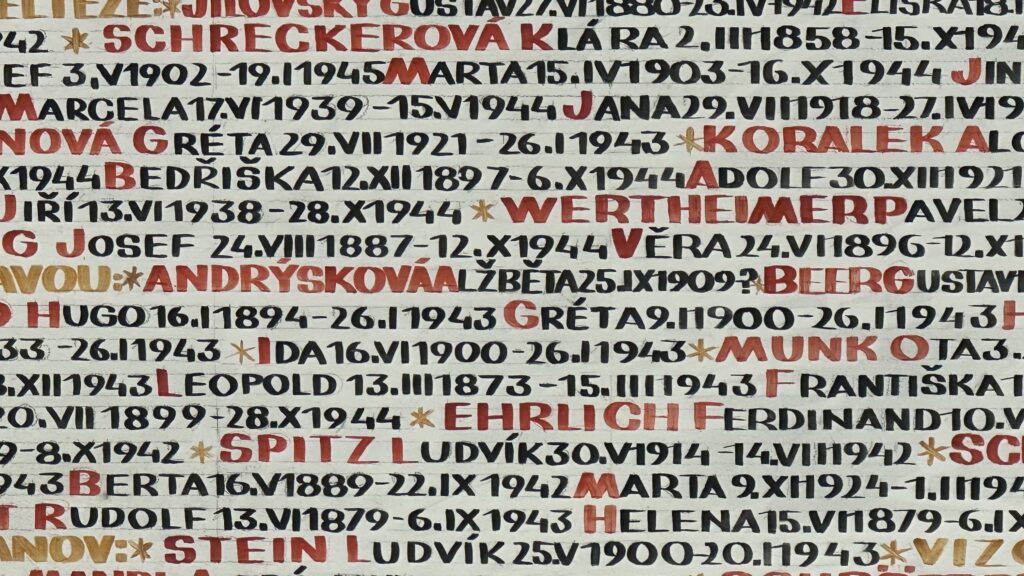
Old Jewish Cemetery
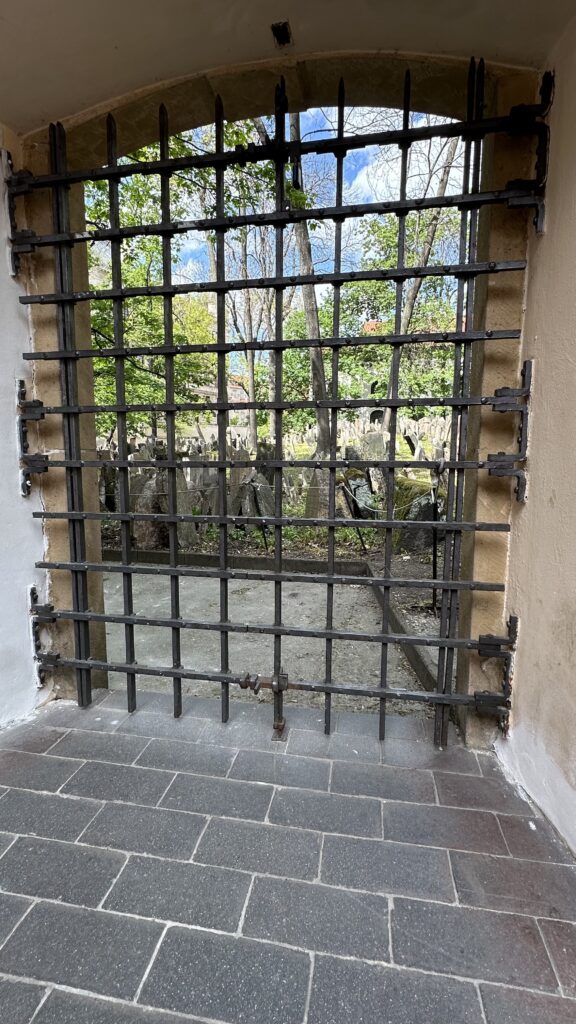
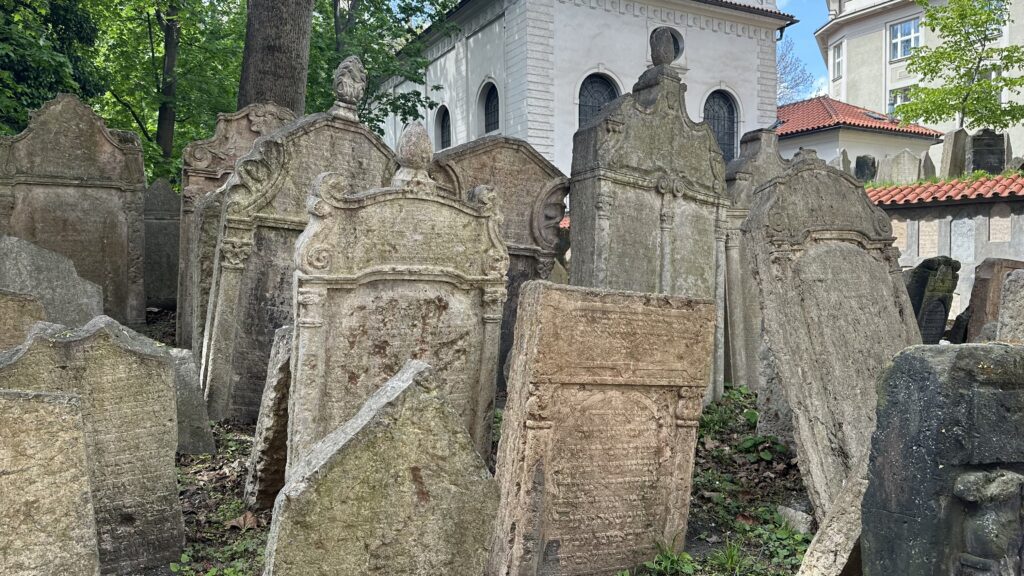
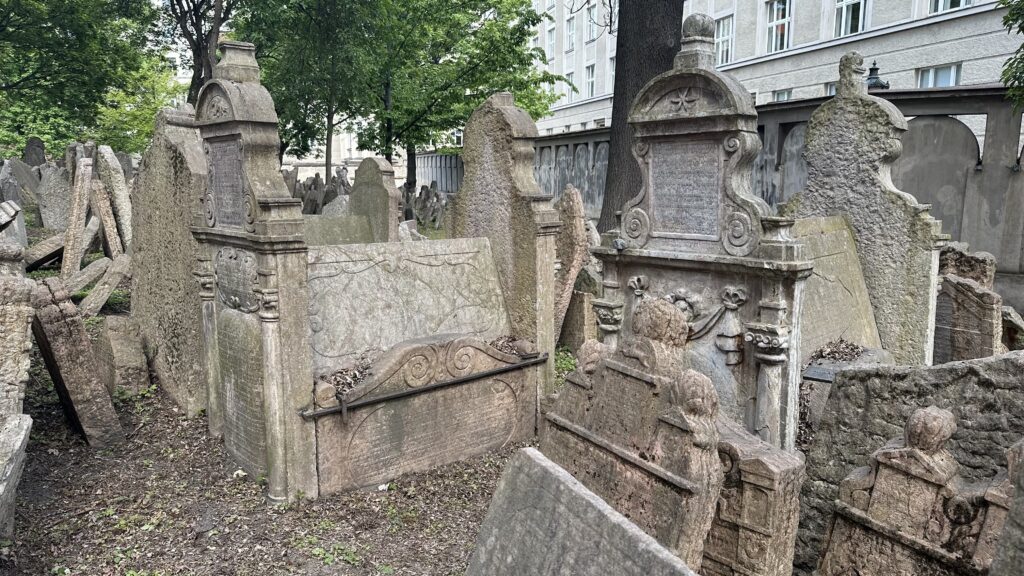
Ceremonial Hall
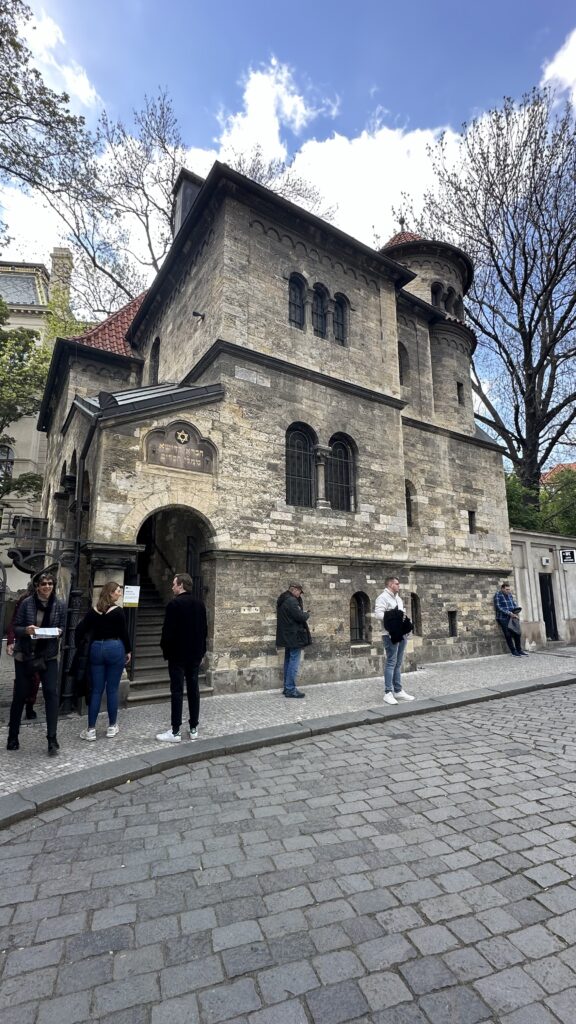
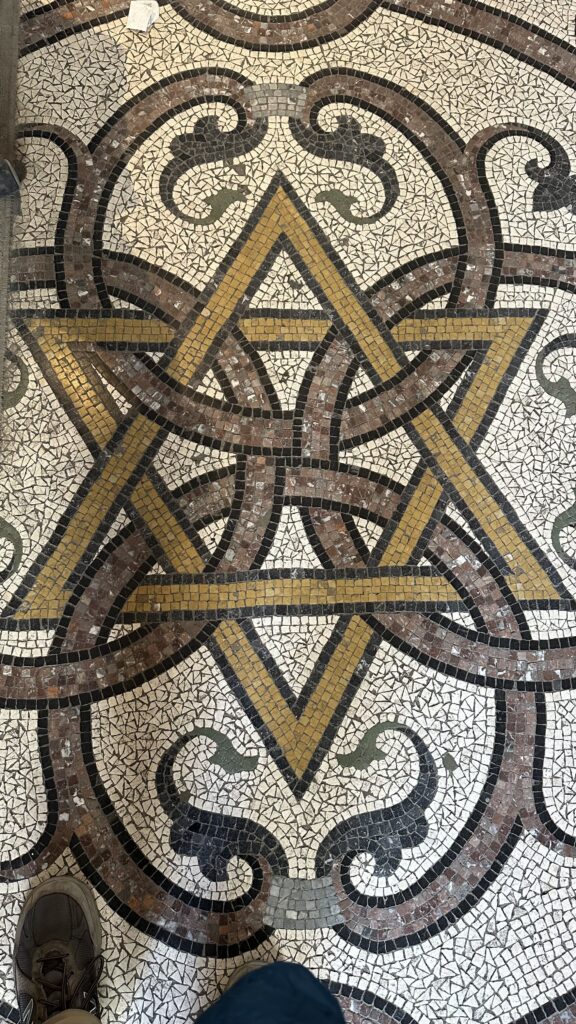
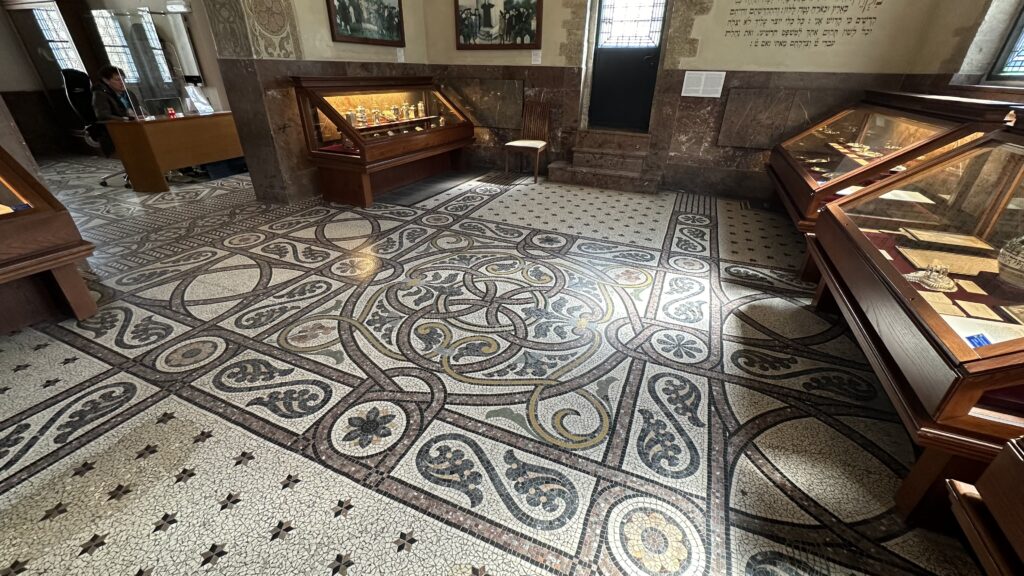
Klausen Synagogue
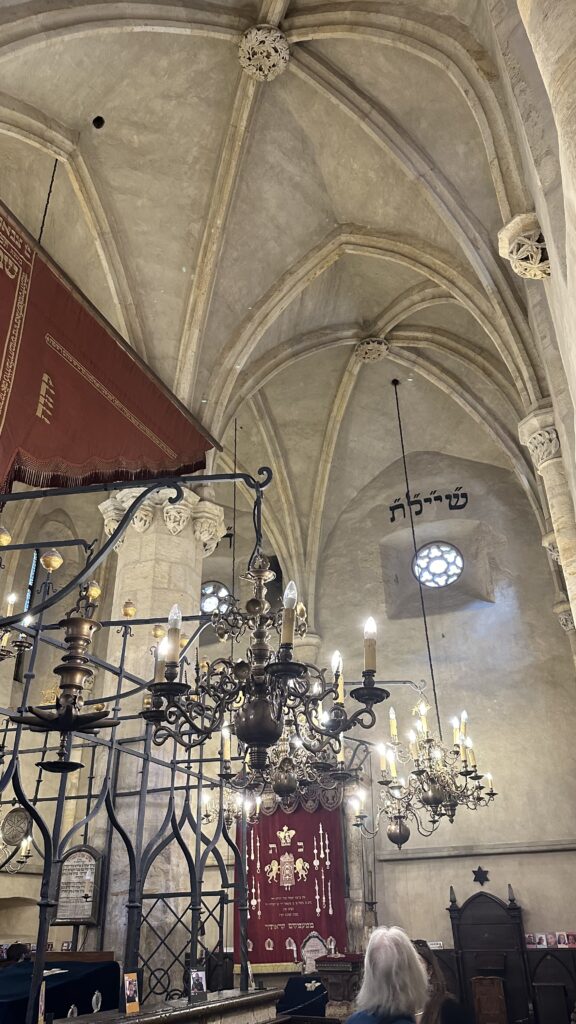
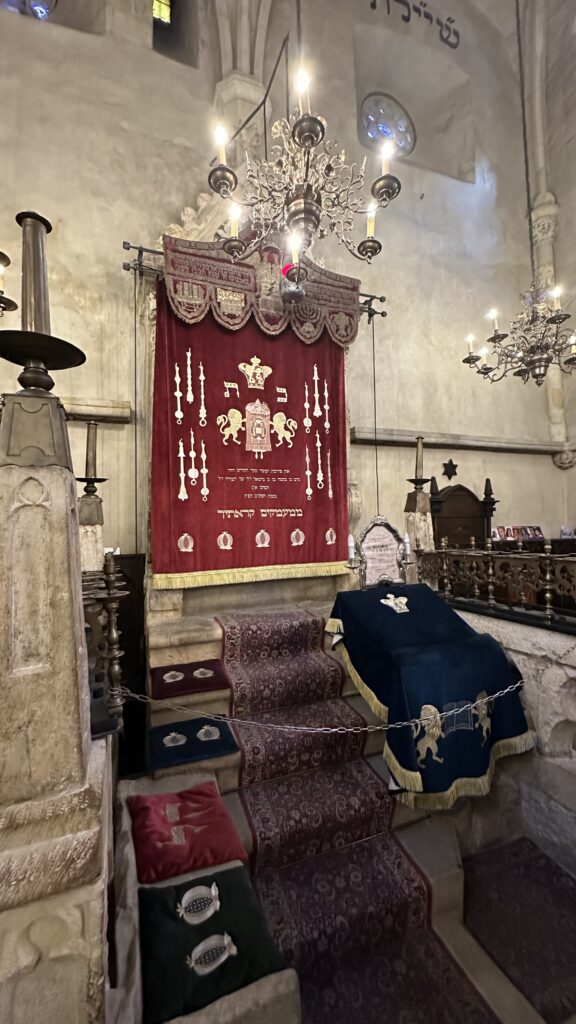
Spanish Synagogue (Photo Dump!)
